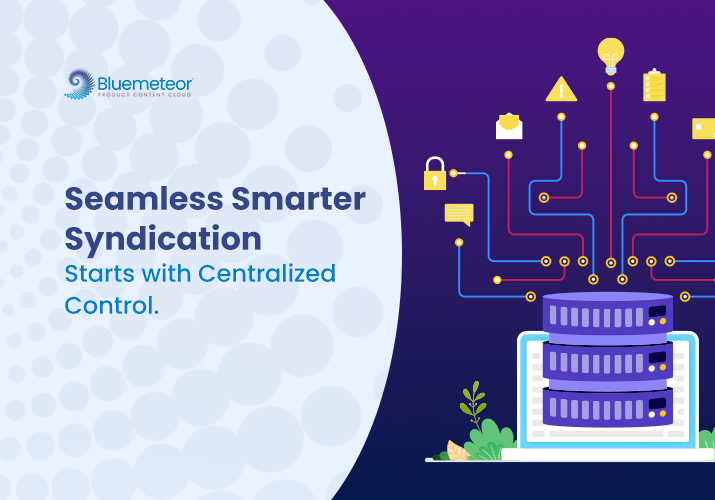PIM Implementation Guide 2025: Steps, Challenges & Best Practices for a Smooth Rollout

Product data has become one of the most valuable assets for modern businesses. Customers expect accurate, detailed, and consistent product information across every channel they interact with. This growing demand has led many companies to adopt Product Information Management systems, also known as PIM. This guide talks about PIM implementation on a detailed note
The Global Market of PIM
The global PIM market is expanding at an impressive pace. In 2023, it was valued at roughly USD 3.67 billion, and projections suggest it will exceed USD 20 billion by 2032.
North America currently holds the largest share, with over 33% of the market. This growth signals that more companies are realizing the importance of centralizing and managing product data effectively.
However, a PIM system is not a plug-and-play solution. A successful rollout involves careful planning, collaboration across departments, and ongoing optimization.
In this guide, we will explore the essential steps, common challenges, and best practices that can help ensure your project delivers lasting value.
Steps for a Smooth Rollout
Implementing a PIM system is a complex journey, but following a clear roadmap can make the rollout smoother, faster, and more effective. Here are the key steps to ensure success.
Secure Executive Sponsorship
Strong leadership support is the foundation of any successful project. When executives understand the strategic benefits, they are more likely to allocate the necessary resources and push the initiative forward.
Aligning the project with business objectives, such as improving customer experience or accelerating product launches, also helps gain this buy-in.
For example, a retail brand secured CEO backing by showing how a PIM system could cut catalog errors by 40% and speed up new product launches, directly boosting sales and customer trust.
Build a Cross-Functional Team
PIM implementation is not just an IT task. Marketing, operations, product teams, and e-commerce all play a role. Involving representatives from each department ensures the system meets diverse needs and avoids siloed decision-making.
Clear roles and responsibilities help the team move quickly and stay aligned.
Audit and Prepare Product Data
Before moving any information into the new system, it is critical to assess your existing data. Identify sources, ownership, and any inconsistencies.
Clean, standardize, and enrich your product information so the system starts with accurate and reliable data. Migrating poor-quality data will only create problems later.
For example, before migrating to PIM, a distributor discovered product names spelled differently across systems. By standardizing naming conventions, they avoided confusion and improved search accuracy.
Plan Integrations in Detail
A PIM system rarely works in isolation. It must connect with platforms like ERP, CMS, or digital asset management systems. Mapping out these integrations in advance helps avoid disruptions and ensures data flows smoothly across all connected channels.
Define Measurable Goals
Every project needs success metrics. Whether you aim to reduce catalog errors, improve product launch times, or enhance content reuse, define these KPIs early. Tracking them throughout the rollout provides clarity on whether the project is delivering its intended results.
For example, an online seller set a goal to reduce product launch time from three weeks to one week. Tracking this KPI helped them measure the true impact of the PIM implementation.
Manage Change from the Start
Introducing new workflows can be met with resistance. Preparing teams with clear communication, training sessions, and onboarding resources helps reduce pushback. Involving users early in the process also makes them feel invested in the outcome.
Roll Out in Phases
A gradual rollout reduces risk. Starting with a small product category or region allows you to test processes, identify issues, and refine workflows before expanding to the entire catalog. This phased approach builds confidence and minimizes disruption.
Let’s have a listicle view of this
Steps for a Smooth PIM Rollout
- Secure Executive Sponsorship
- Gain strong leadership support.
- Align the project with business objectives like customer experience or faster product launches.
- Ensure executives allocate resources and drive the initiative forward.
- Gain strong leadership support.
- Build a Cross-Functional Team
- Involve marketing, operations, product, IT, and e-commerce teams.
- Encourage collaboration to avoid siloed decision-making.
- Define clear roles and responsibilities for faster progress.
- Involve marketing, operations, product, IT, and e-commerce teams.
- Audit and Prepare Product Data
- Assess existing data sources, ownership, and inconsistencies.
- Clean, standardize, and enrich product information before migration.
- Avoid moving poor-quality data into the new system.
- Assess existing data sources, ownership, and inconsistencies.
- Plan Integrations in Detail
- Identify required connections with ERP, CMS, DAM, or other platforms.
- Map out integration flows early to prevent disruptions.
- Test thoroughly to ensure smooth data sharing.
- Identify required connections with ERP, CMS, DAM, or other platforms.
- Define Measurable Goals
- Set clear KPIs such as fewer catalog errors, faster product launches, or improved content reuse.
- Track progress against these goals throughout the rollout.
- Use metrics to measure impact and ROI.
- Set clear KPIs such as fewer catalog errors, faster product launches, or improved content reuse.
- Manage Change from the Start
- Communicate openly about upcoming changes.
- Provide training, onboarding, and resources to reduce resistance.
- Involve end-users early to boost adoption and ownership.
- Communicate openly about upcoming changes.
- Roll Out in Phases
- Begin with a small product category, region, or pilot project.
- Test workflows, identify issues, and refine processes.
- Expand gradually to reduce risks and build confidence.
- Begin with a small product category, region, or pilot project.
Common Challenges to Expect in PIM Implementation
While a PIM system can transform product data management, the journey is not without obstacles. Being aware of common challenges in advance helps organizations prepare strategies to overcome them effectively.
Data Quality Problems
One of the biggest barriers to a smooth rollout is poor data quality. Inaccurate, incomplete, or inconsistent product data can slow adoption and frustrate users. Address this early with a thorough audit and strict data governance policies.
Integration Difficulties
Connecting the PIM to existing systems can be complex, especially when data formats differ. Without proper mapping and testing, information may fail to sync correctly. Working closely with technical teams and allocating enough time for testing is essential.
Resistance to New Processes
Employees accustomed to existing workflows may be hesitant to change. Ongoing communication, training, and highlighting the system’s benefits can help ease the transition.
Scalability Concerns
Your chosen solution must handle increasing volumes of product data as the business grows. Selecting a scalable platform from the start prevents the need for costly replacements later.
Cost and ROI Considerations
A PIM system is a significant investment. To justify the cost, regularly measure its impact on efficiency, accuracy, and revenue growth.
Best Practices for Long-Term Success
To ensure your PIM system continues delivering value long after implementation, it’s important to follow proven best practices that keep the platform efficient, scalable, and user-friendly.
Start Small
Beginning with a pilot project allows you to test the system in a controlled environment. This way, you can make adjustments before expanding to the full product range.
Involve Stakeholders Throughout
Continuous stakeholder involvement ensures the system remains aligned with real business needs. Regular updates and feedback sessions keep everyone engaged and informed.
Keep Data Quality Central
Data governance should not be a one-time exercise. Establish ongoing processes to maintain accuracy, from product descriptions to technical specifications.
Train for Every Role
Different users interact with the PIM in different ways. Tailor training for each role, and provide quick reference materials so employees can troubleshoot common issues themselves.
Monitor and Optimize
After the rollout, track performance, gather user feedback, and adjust workflows as needed. Small improvements made regularly can have a significant impact over time.
Use Automation Wisely
Features like AI-driven data enrichment can save time and improve accuracy. However, automation should complement human oversight, not replace it entirely.
| Common Challenges | Best Practices for Long-Term Success |
| Data quality issues | Start small with a pilot project |
| Integration difficulties | Involve stakeholders continuously |
| Resistance to new processes | Keep data quality central |
| Scalability concerns | Train for every role |
| Cost & ROI considerations | Monitor, optimize, and adjust regularly |
| Use automation wisely with oversight |
Why Preparation of PIM Implementation Pays Off
Many organizations underestimate the planning required for a successful PIM implementation. Rushing through data preparation or skipping integration planning often leads to delays, user frustration, and lower adoption rates.
By taking the time to prepare thoroughly, you set the stage for a system that not only works from day one but continues to deliver value as your business grows.
The companies that succeed are those that combine strong leadership, clear objectives, and disciplined execution. They treat the PIM as a strategic asset, not just a software tool.
Bluemeteor: Simplifying PIM Challenges with Next-Gen Solutions
Many of the common challenges in PIM implementation, such as data quality issues, complex integrations, and scalability concerns, can be eased with the right platform.
Bluemeteor’s AI-powered Product Content Cloud is designed to address these exact pain points. By combining advanced PIM and DAM capabilities, it helps businesses:
- Ensure clean, consistent data with built-in governance and enrichment tools
- Streamline integrations across ERP, CMS, and e-commerce platforms for smooth data flow
- Support scalability so growing product catalogs never slow you down
- Speed up time-to-market by automating repetitive tasks while keeping accuracy intact
Trusted by manufacturers, distributors, and retailers, Bluemeteor empowers teams to follow best practices with ease, starting small, involving stakeholders, and continuously optimizing, while ensuring measurable impact and long-term success.
Conclusion
In 2025, effective product information management is essential for improving efficiency, customer satisfaction, and speed to market.
A successful PIM rollout relies on executive support, cross-department collaboration, clean data, and well-planned integrations. Following best practices and addressing challenges early ensures measurable benefits.
When implemented strategically, a PIM system can strengthen your product strategy, enhance brand consistency, and create better customer experiences.
Book a demo or consultation today to see how Bluemeteor can transform your product data management.




